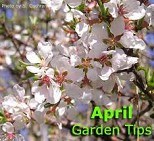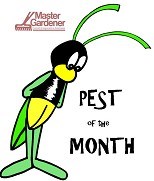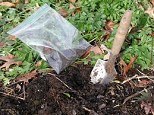Mile a Minute Vine, or Persicaria perfoliata, has been found in Livingston County, but the state Department of Environmental Conservation believes we can beat it.
Posted 5/2/2018

Posted 5/2/2018

Q: What is a frost-free date and how does this affect gardening? - Kate, Olivebridge
A: Most perennials, shrubs and trees aren’t affected by freeze and frost dates, but if you’re planting annuals or vegetables, these are details you need to know. Many vegetables, including tomatoes, green beans, squash, cucumbers, pumpkins, peppers and corn, don’t tolerate even a light frost. Annual flowers, such as petunias, nasturtiums and morning glories, among others, can’t tolerate cold temperatures either. Plant them out too early and they’ll likely be stunted or killed.
Posted 2/28/2018

Brown Marmorated Stink Bug (Halyomorpha halys) is a native of Eastern Asia and was first detected in Pennsylvania in October 2001. The insects often are found in houses, where they produce an unpleasant smelling chemical. They can be an agricultural pest, threatening apples, pears, peaches, figs, mulberries, citrus, persimmon and soybeans.
Posted 2/28/2018
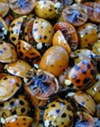
The multicolored Asian lady beetle, first found in New York State in Chemung County in early 1994, is an introduced biological control agent that has spread rapidly throughout the northeastern states. It has become a major nuisance to homeowners because of its habit of invading houses and buildings in large numbers in the fall (mid-October to early November) and appearing again on warm, sunny days in February and March. Despite its annoyance value, H. axyridis preys upon many species of injurious soft-bodied insects such as aphids, scales, and psyllids and is thus considered beneficial to growers and agriculturalists.
Posted 2/7/2018

Posted 2/7/2018

The largest family of flowering plants is the orchid family (Orchidaceae), which has around 28,000 species. Prized by collectors for their beautiful blooms, and threatened by habitat loss, many orchids are now endangered in the wild. New methods of propagation, including tissue culture, have made some orchid species such as Moth Orchids more affordable. The key to growing your orchid successfully is to know which species it is.
Posted 9/7/2017

Apple scab fungus on crabapples has left trees with few leaves, but the tree is not dying
Posted 6/10/2017

Join us for our Annual Master Gardener Plant Sale & Demo Day. Saturday, June 10th, 8am-11am.
Location: Montgomery County Annex Building, 20 Park St Fonda.
Shop Fo: perennials and vegetable seedlings grown by our Master Gardeners.
Demo's on: Worms, Composting, Pallet Gardening, Fermenting, Planting in Beds, Soil Testing (bring a sample), question & answer table, And MUCH MORE!
Call our office for more information, 853-2135
Posted 5/20/2017
LAKE GEORGE, N.Y. — The Lake George Community Garden Club Annual Perennial 2-Day Plant Sale is planned for Saturday, May 20 and Sunday, May 28. Select from a huge number and variety of high-quality perennial plants dug, potted, and ready to plant from members’ zone 4 and 5 gardens. Garden club members are always available at the sales to share planting instructions and important gardening tips. All perennials are reasonably priced to fit your budget.
Posted 4/26/2017
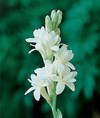
| Every year it feels like a small miracle to witness the emergence and blooms of the early bulbs. Often there is still snow around when the first of them, Winter aconite (Eranthis) and snowdrops (Galanthus), start blooming. Somehow, that makes them even more special. Early species of Crocus |
|
| Use your camera to record where your bulbs are. Save the photos for your September notes as a reminder to order early bulbs for planting in October. | |
| More Articles |



